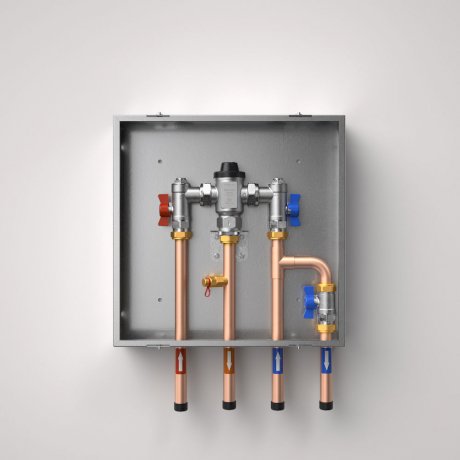Our journey with some of our clients has been interesting… to say we continue to learn is an understatement. We are in a very privileged position where clients bring us many of their compliance challenges and we work collaboratively to solve them.
By osmosis and (repetitive explanation) we learn some of the technical challenges associated with plant, people, process and best practice. Working across such a wide variety across industry, from Water Hygiene, fire, electrical, medical devices, refrigeration, pressure vessels and so much more.
One of the areas we find challenging for many of our clients is TMV compliance (Thermostatic Mixing Valves). TMV’s are widely used across industry to ensure water is blended to prevent scalding to members of the public and vulnerable people in the health care industry.

TMV compliance is a challenge because there are defined standards which must be met to ensure they are compliant, which range from monthly temperature checks (in some states) to 6 monthly inspections, annual inspections and 5 yearly overhauls. That is a lot of work for items that are often positioned in awkward locations (either by design or retrofit), are difficult to track and are open to interpretation by engineers and plumbers how best to comply.
Working with a client recently, we have created (within our compliance software) a solution that not only allows for plumbing standards to be scheduled, undertaken and reporting using our software, but also water hygiene tests and tasks – samples, flushing etc.
The solution has resulted in over 750 TMV’s being barcoded and having tasks scheduled against them.
With each TMV requiring a minimum of 26 checks a year, that is a lot of scheduling, records and reports to manage. When you add to the requirement to replace or overhaul the TMV every 5 years, management of TMV compliance can be a significant challenge to Facility Managers or Engineers.
Solving the challenge:
Working collaboratively with the site engineer and the inhouse & contract plumbing teams, we have managed to solve this for the client by:
- Scheduling all TMV checks,
- Creating the TMV checklist on the mobile app (the checklist was created by combining the best of the various plumbers inspection sheet – best practice…)
- Barcoding each TMV – when the plumber attend the TMV, they scan the barcode thereby providing proof of presence and ensure that the correct TMV is serviced,
- Admin data such as user, time, date, geolocation etc. are automatically recorded,
- Each of the tasks is completed, ranging from simple checks to temperature records etc. any failures or opportunities for improvement are captured and shared with key users.
- A daily service report for each TMV is sent automatically to key persons
- Exception report is sent to key stakeholders
- Monthly / quarterly management reports

All of these are key components to ensure that each TMV is inspected, serviced and commissioned in line with agreed standards.
While we are very happy to be part of the solution, it is important to remember that the site engineers and plumbers are at the coal face and are tasked with delivering the compliance. We are very happy to help these people in delivering safe and compliant systems on site.
If you would like to know any more, please get in touch or connect with us on Facebook.
